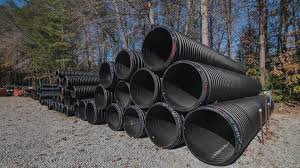Dec . 04, 2024 18:10 Back to list
upvc manufacturer
The Rise of UPVC Manufacturers A Revolution in Construction and Design
Introduction
In recent years, the demand for environmentally friendly and durable construction materials has surged, leading to a significant rise in the popularity of Unplasticized Polyvinyl Chloride (UPVC). This material, widely known for its robustness and low maintenance, has transformed the manufacturing landscape in the construction industry. UPVC manufacturers have become key players, addressing both aesthetic and functional needs in modern architecture. This article delves into the significance of UPVC, the process of its manufacture, and its impact on the building sector.
What is UPVC?
Unplasticized Polyvinyl Chloride (UPVC) is a form of rigid plastic that is a preferred material in the construction industry due to its strength, durability, and resistance to environmental factors. Unlike traditional PVC, UPVC does not contain plasticizers, which makes it more stable and less flexible, resulting in a material that can withstand harsh weather conditions without degrading. This makes it ideal for applications such as windows, doors, pipelines, and siding.
Benefits of Using UPVC
The advantages of UPVC products are manifold. First and foremost, UPVC is highly resistant to corrosion, making it a convenient choice for coastal buildings where saltwater can accelerate deterioration. Additionally, UPVC is energy-efficient; its insulating properties help maintain a consistent indoor climate, reducing the need for heating and cooling systems. This not only lowers energy bills but also contributes to a reduced carbon footprint.
Moreover, UPVC is low maintenance. Unlike wooden alternatives that require regular painting and treatment against pests and rot, UPVC can be easily cleaned and retains its appearance over time. This makes it an attractive option for architects and builders seeking to minimize long-term maintenance costs for homeowners. Also, UPVC products are available in a variety of colors and finishes, allowing for versatility in design.
Manufacturing Process of UPVC
upvc manufacturer

The manufacturing process of UPVC begins with the polymerization of vinyl chloride monomer (VCM). In a controlled environment, the VCM is transformed into a solid resin through a chemical reaction. This resin is then mixed with a series of additives, such as stabilizers, lubricants, and pigments, to enhance its properties and appearance.
The mixture is fed into a machine where it is heated, cooled, and then shaped into desired forms through processes like extrusion or injection molding. Extrusion allows for the continuous production of profiles like window frames and pipes, while injection molding is used for creating more complex shapes.
Quality control is crucial at every stage of production to ensure that the end products meet stringent industry standards. Manufacturers often conduct tests for durability, thermal efficiency, and resistance to impact to guarantee thatUPVC products perform reliably in various applications.
The Role of UPVC Manufacturers in Sustainable Development
The rise of UPVC has also coincided with growing awareness of sustainability in construction. Many UPVC manufacturers are striving to reduce their environmental impact by adopting recycling processes. The production of UPVC windows and doors, for example, is often designed with recyclability in mind, allowing products to be reclaimed and reused at the end of their life cycle.
Furthermore, the use of UPVC in construction contributes to creating greener buildings. Its energy efficiency helps in reducing overall energy consumption, aligning with global efforts to combat climate change. Governments and regulatory bodies are increasingly recognizing the importance of sustainable building materials, further boosting the demand for UPVC.
Conclusion
As the construction industry continues to evolve, UPVC manufacturers are paving the way for innovation and sustainable practices. The durability, energy efficiency, and aesthetic versatility of UPVC products make them an ideal choice for modern architecture. With the ongoing focus on sustainability and the reduction of carbon footprints, UPVC is set to play a crucial role in shaping the future of construction. As consumers become more conscious of their environmental impact, the demand for UPVC will likely grow, solidifying its place as a leading material in the building sector.
-
High-Quality PVC Borehole Pipes Durable & Versatile Pipe Solutions
NewsJul.08,2025
-
High-Quality PVC Perforated Pipes for Efficient Drainage Leading Manufacturers & Factories
NewsJul.08,2025
-
High-Quality PVC Borehole Pipes Durable Pipe Solutions by Leading Manufacturer
NewsJul.08,2025
-
High-Quality PVC Borehole Pipes Reliable PVC Pipe Manufacturer Solutions
NewsJul.07,2025
-
High-Quality UPVC Drain Pipes Durable HDPE & Drain Pipe Solutions
NewsJul.07,2025
-
High-Quality Conduit Pipes & HDPE Conduit Fittings Manufacturer Reliable Factory Supply
NewsJul.06,2025

